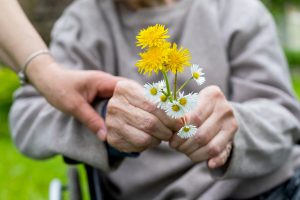3-minute read
Hostility. Defiance. Change in appetite.
If you’re caring for a person with development disabilities, those are just a few of the telltale signs indicating that person might have been abused or neglected.
Disability advocates for years have complained that state agencies have fallen short in their duty to protect those least able to protect themselves, the vulnerable whose lives are given over to strangers who sometimes engage in criminal behavior.
“Sometimes,” in fact, isn’t quite accurate. According to the studies done, 67% of the developmentally disabled are abused at one point or another. More often than not, those who commit these crimes as getting away with it, with only five prosecutions out of every 100 cases reported.
This sort of thing happens everywhere and more frequently than ever, sadly. Since 2009, the rate of violent victimization has increased nearly 25% among the disabled, from about 29 per 1,000 people to 36 per 1,000. By comparison, that rate is increased by less than 1% among individuals without disabilities.

In Arizona, the case that caught everyone’s attention involved a 29-year-old disabled resident of a long-term care facility in Phoenix who could not talk, walk or care for herself. To her family's shock, the woman gave birth to a boy on New Year’s Eve 2018. No one had even noticed she was pregnant. She had been raped.
In response, a state task force was formed and issued a series of recommendations to improve services and better protect those in homes for the developmentally disabled.
One of the recommendations that many hope will make a real difference requires annual training of providers and their employees on how to recognize signs of abuse and neglect among people with development and intellectual disabilities.
It sounds obvious, of course, but abusive behavior isn’t just about sexual abuse. It includes such things as hitting, kicking, pinching, pulling hair. It also includes making derogatory remarks or cursing at an individual.
The training that care facilities are now required to provide includes helping their employees recognize that sort of behavior for what it is - abuse.
It also will help those employees understand that depriving someone of food, water, medication and supervision amount to neglect.
Critically, the training also will help everyone recognize signs of possible abuse and neglect. Some are more difficult to discern than others. A suicide attempt, of course, is a more dramatic call for help than, say, a change or loss of appetite.
Will this training make a dent in the problem? We can only hope.
This past summer, meanwhile, a judge approved a $15 million settlement in a lawsuit filed by the family of the developmentally disabled woman who was raped and impregnated at that Phoenix facility.
Note: The Mahoney Group’s risk management team is making no-cost abuse and neglect prevention training available to any member of the Arizona Association of Providers for People with Disabilities who operate residential or day-time service programs.
The Mahoney Group, based in Mesa, Ariz., is one of the largest independent insurance and employee benefits brokerages in the nation. For more information about insurance coverage for human service providers, contact us online or call 480-730-4920.
This article is not intended to be exhaustive nor should any discussion or opinions be construed as legal advice. Readers should contact legal counsel or an insurance professional for appropriate advice.
